Country Peoples Republic of China University Yangzhou University Area 6,678 km2 | Mayor Zhu Minyang (???) | |
Yangzhou (simplified Chinese: ; traditional Chinese: ; pinyin: ) is a prefecture-level city in central Jiangsu province in the Peoples Republic of China. Sitting on the northern bank of the Yangtze River, it borders the provincial capital of Nanjing to the southwest, Huaian to the north, Yancheng to the northeast, Taizhou to the east, and Zhenjiang across the river to the south. Its population is 4,414,681 at the 2010 census and its urban area is home to 2,146,980 inhabitants including three urban districts plus currently in the agglomeration.
Contents
- Map of Yangzhou
- Yangzhou city the most beautiful garden city welcome your visiting where are you
- 6th sinosingapore exchange 2009 yangzhou tourist attractions
- History
- Geography
- Culture
- Tourism
- Cuisine
- Yangzhou fried rice
- The best of chinese huaiyang cuisine cici li food travel
- References
Map of Yangzhou
Historically it is one of the wealthiest of Chinas cities, known at various periods for its great merchant families, poets, painters, and scholars. Its name (lit. "Rising Prefecture") refers to its former position as the capital of Yangzhou prefecture in imperial China.
Yangzhou city the most beautiful garden city welcome your visiting where are you
6th sinosingapore exchange 2009 yangzhou tourist attractions
History
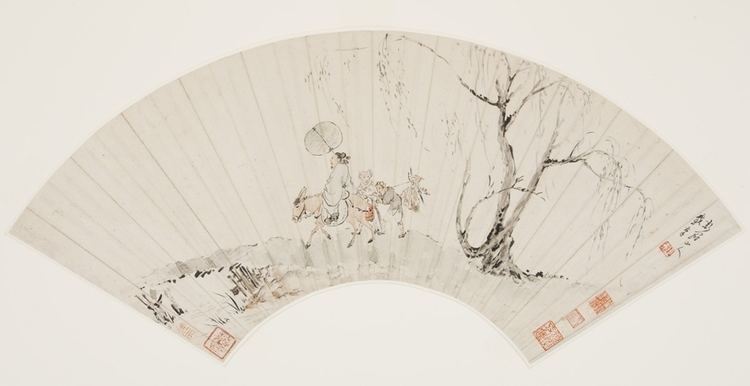
The first settlement in the Yangzhou area, called Guangling (Chinese: ; pinyin: ; Wade–Giles: ) was founded in the Spring and Autumn Period. After the defeat of Yue by King Fuchai of Wu a garrison city was built 12 metres (39 ft) above water level on the northern bank of the Yangtze River c 485 BCE. This city in the shape of a three by three li square was called Hancheng. The newly created Han canal formed a moat around the south and east sides of the city. The purpose of Hancheng was to protect Suzhou from naval invasion from the Qi. In 590 CE, the city began to be called Yangzhou, which was the traditional name of what was then the entire southeastern part of China.
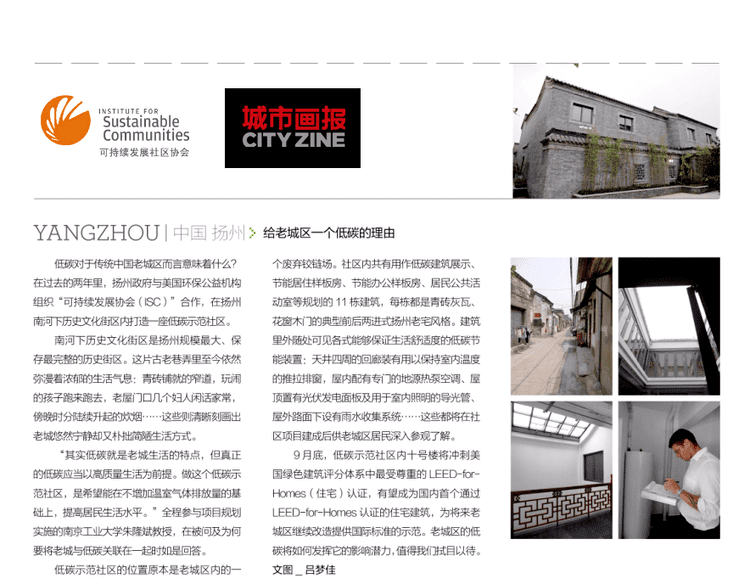
Under the second Sui Dynasty (581–617 CE) Emperor Yangdi (r. 604–617), Yangzhou was the southern capital of China and called Jiangdu upon the completion of the Jinghang (Grand) Canal until the fall of the dynasty. The city has remained a leading economic and cultural center and major port of foreign trade and external exchange since the Tang Dynasty (618–907). At one time many Arab and Persian merchants lived in the city in the 7th century but they were massacred in the thousands in 760 CE during the An Shi Rebellion by the Tian Shengongs (Chinese: ; pinyin: ; Wade–Giles: ) rebel insurgents during the Yangzhou massacre (760). During the Tang Dynasty many merchants from Koreas Silla Dynasty also lived in Yangzhou. There were also Arabic inscriptions from the 1200s and 1300s.
The city, still known as Guangling, was briefly made the capital of the Wu Kingdom during the Five Dynasties and Ten Kingdoms period.
Yangzhou was briefly the temporary seat of the Song Dynasty government between 1128 and 1129, when most of northern China had been conquered by the Jurchens in the Jin–Song wars. The Song had retreated south to the city from their original capital in Kaifeng after it was captured by the Jurchens in the Jingkang Incident of 1127. From Yangzhou, the Song moved to Hangzhou in 1129, later establishing it as the capital of the Southern Song Dynasty. In 1280 AD, Yangzhou was the site of a massive gunpowder explosion when the bomb store of the Weiyang arsenal accidentally caught fire. This blast killed over a hundred guards, hurled debris from buildings into the air that landed ten li away from the site of the explosion, and could be felt 100 li away as tiles on roofs shook (refer to gunpowder article).
Marco Polo claimed to have served in Yangzhou under the Mongol emperor Kubilai Khan in the period around 1282–1287 (to 1285, according to Perkins). Although some versions of Polos memoirs imply that he was the governor of Yangzhou, it is more likely that he was an official in the salt industry, if indeed he was employed there at all. Chinese texts offer no supporting evidence for his claim. The discovery of the 1342 tomb of Katarina Vilioni, member of an Italian trading family in Yangzhou, does, however, suggest the existence of a thriving Italian community in the city in the 14th century.
During the Ming Dynasty (1368–1644) until the 19th century Yangzhou acted as a major trade exchange center for salt (a government regulated commodity), rice, and silk. The Ming were largely responsible for building the city as it now stands and surrounding it with 9 kilometres (5.6 mi) of walls.
After the fall of Beijing and northern China to the Manchus in 1644, Yangzhou remained under the control of the short-lived Ming loyalist government of the so-called Hongguang Emperor, based in Nanjing. The Qing forces, led by Prince Dodo, reached Yangzhou in the spring of 1645, and despite the heroic efforts of its chief defender, Shi Kefa, the city fell on May 20, 1645, after a brief siege. A ten-day massacre followed, in which, as it was traditionally alleged, 800,000 people died. Shi Kefa himself was killed by the Manchus as well, after he refused to switch his allegiance to the Qing regime.
The citys rapid recovery from these events and its great prosperity through the early and middle years of the Qing dynasty were due to its role as administrative center of the Lianghuai sector of the government salt monopoly. As early as 1655, the Dutch envoy Johan Nieuhof described the city (Jamcefu, i.e. Yangzhou-Fu, in his transcription) commented on the citys salt trade as follows:
This Trade alone has so very much enrichd the Inhabitants of this Town, that they have re-built their City since the last destruction by the Tartars, erecting it in as great splendor as it was at first.
Famed at that time and since for literature, art, and the gardens of its merchant families, many of which were visited by the Kangxi and Qianling emperors during their Southern Tours, the Qing-era Yangzhou has been the focus of intensive research by historians.
The Yangzhou riot in 1868 was a pivotal moment of Anglo-Chinese relations during the late Qing Dynasty that almost led to war. The crisis was fomented by the gentry of the city who opposed the presence of foreign Christian missionaries there. The riot that resulted was an angry crowd estimated at eight to ten thousand who assaulted the premises of the British China Inland Mission in Yangzhou by looting, burning and attacking the missionaries led by Hudson Taylor. No one was killed, however several of the missionaries were injured as they were forced to flee for their lives. As a result of the report of the riot, the British consul in Shanghai, Sir Walter Henry Medhurst took seventy Royal marines in a Man of war and steamed up the Yangtze to Nanjing in a controversial show of force that eventually resulted in an official apology from Viceroy Zeng Guofan and financial restitution made to the injured missionaries.
From the time of the Taiping Rebellion (1853) to the end of the Communist revolution (1949) Yangzhou was in decline, due to war damage and neglect of the Grand Canal as railways replaced it in importance. During the Sino-Japanese War it endured eight years of enemy occupation and was used by the Japanese as a site for internment camps. About 1200 civilians of Allied nationalities (mostly British and Australian) from Shanghai were transported here in 1943, and located in one of three camps (A, B, and C). Camps B and C were closed down in September, 1943, after the second American-Japanese prisoner exchange, and their inhabitants transferred back to Shanghai camps. Camp C, located in the former American Mission in the north-west of the city, was maintained for the duration of the war.
Among early plans for railways in the late Qing was one for a line that would connect Yangzhou to the north, but this was jettisoned in favour of an alternative route. The citys status as a leading economic centre in China was never to be restored. Not until the 1990s did it begin to regain some semblance of prosperity, benefitting from national economic growth and a number of targeted development projects. With the canal now partially restored, and excellent rail and road connections, Yangzhou is once again an important transportation and market center. It also has some industrial output, chiefly in cotton and textiles. In 2004, a railway linked Yangzhou for the first time with Nanjing.
Geography
Yangzhou is located on a plain north of the Yangtze River. The Grand Canal of China, also known as the Jinghang Canal, crosses the prefecture-level from the north to the south; its modern route passes through the eastern outskirts of Yangzhous main urban area, while its old route runs through the city center. Other major bodies of water within the prefecture-level city include the Baoshe River, Datong River, Beichengzi River, Tongyang Canal, Xintongyang Canal, Baima Lake, Baoying Lake, Gaoyou Lake, Shaobo Lake.
Like much of the entire prefecture-level city, Yangzhous main urban area (the "city proper") is criss-crossed by an intricate network of canals and small lakes. The historic city center (the former waled city) is surrounded by canals on all sides: the Old Grand Canal forms its eastern and southern boundaries; the City Moat Canal (Huchenghe) runs along the former walled citys northern edge, connecting the Old Grand Canal with the Slender West Lake; the Erdaohe Canal runs along the old citys western edge, from the Slender West Lake to the Lotus Flower Pond (Hehuachi), which in its turn is connected by the short Erdaogou canal with the Old Grand Canal. It is possible to sail a small water craft from the Thin West Lake, via the Erdaohe, the Hehua Pond, and the Erdaogou into the Old Grand Canal.
Local landscape: Slender West Lake, Ge garden, He garden, Da Ming Temple, Phoenix Island, etc.
Culture
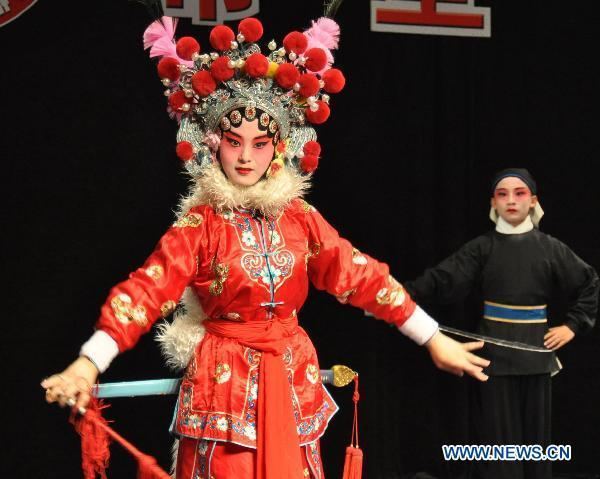
The Yangzhou dialect (Chinese: ; pinyin: ) of Chinese is representative of Lower Yangtze Mandarin, and is particularly close to the official language of the Ming and Qing courts, which was based on the Nanjing dialect. However, it does differ considerably from modern Standard Chinese, although they are still moderately mutually intelligible.
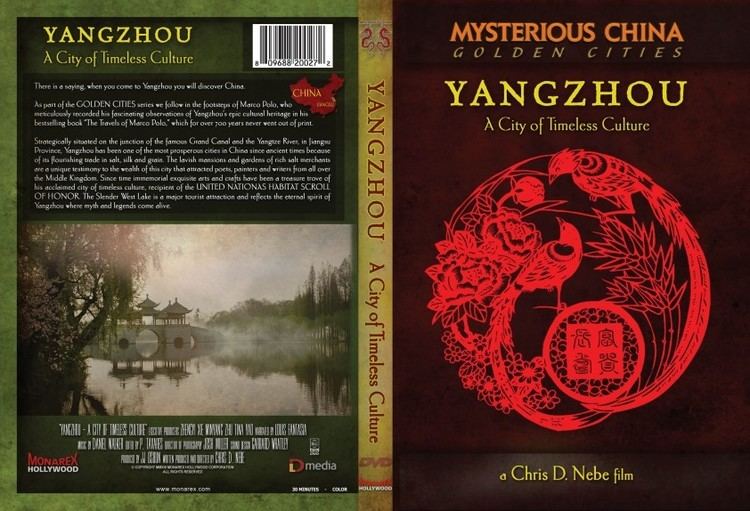
Dialect has also been used as a tool for regional identity and politics in the Jiangbei and Jiangnan regions. While the city of Yangzhou was the center of trade, flourishing and prosperous, it was considered part of Jiangnan, which was known to be wealthy, even though Yangzhou was north of the Yangzi river. Once Yangzhous wealth and prosperity were gone, it was then considered to be part of Jiangbei, the "backwater". After Yangzhou was removed from Jiangnan, its residents decided to replace Jianghuai Mandarin, which was the dialect of Yangzhou, with Taihu Wu dialects. In Jiangnan itself, multiple subdialects of Wu fought for the position of prestige dialect.
During a period of prosperity and Imperial favour, the arts of storytelling and painting flourished in Yangzhou. The innovative painter-calligrapher Shitao lived in Yangzhou during the 1680s and again from 1697 until his death in 1707. A later group of painters from that time called the Eight Eccentrics of Yangzhou are famous throughout China.
Former General secretary of CPC, President of China Jiang Zemin was born and raised in Yangzhou. His middle school is located right across from the public notarys office in Yangzhou.
Yangzhou is famous for its carved lacquerware and jade.
Poet Li Bai (c.700–762) wrote in Seeing Meng Haoran off to Yangzhou from Yellow Crane Pavilion:
Tourism
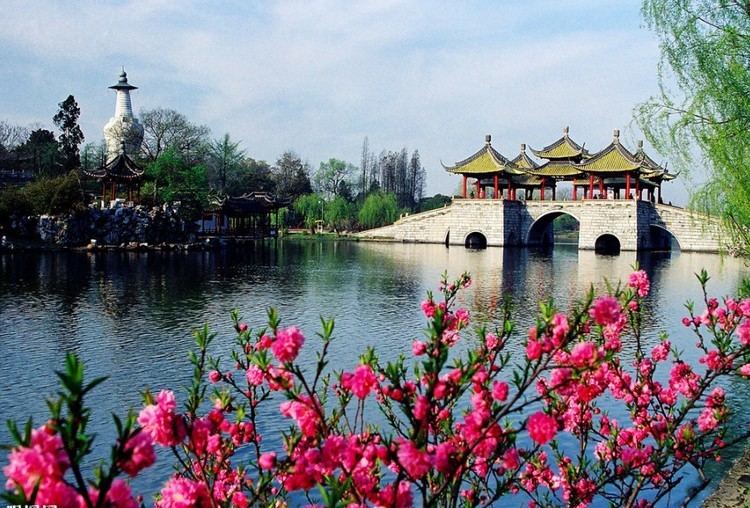
Tourist sights include Slender West Lake and old residences in the moated town, such as the Wang Residence and the Daming temple. Yangzhou is famous for its many well preserved Yangzhou style gardens. Most of the Historic city is in the Guangling District.
Cuisine
Yangzhou dishes may be one of the reasons why the people of Yangzhou are so infatuated with their city. They have an appealing color, aroma, taste and appearance. The original color of each ingredient is preserved after cooking, and no oily sauce is added, so as to retain the fresh flavour of the food.

In Yangzhou all dishes, whether cheap or expensive, are elaborate. Cooks will not scrimp on their work, even with Zhugansi (stewed sliced dry bean curd), a popular dish that costs only a few yuan. Dry bean curd is made by each restaurant that serves it, so the flavor is guaranteed. The cook slices the 1-cm-thick curd into 30 shreds, each one paper-thin but none broken, and then stews them for hours with chopped bamboo shoots and shelled shrimps in chicken soup. In this way the dry bean curd shreds can soak up the flavor of the other ingredients, and the soup is clear but savory. Not only Yangzhou cooks, but also the ordinary people are conscientious about cooking.
